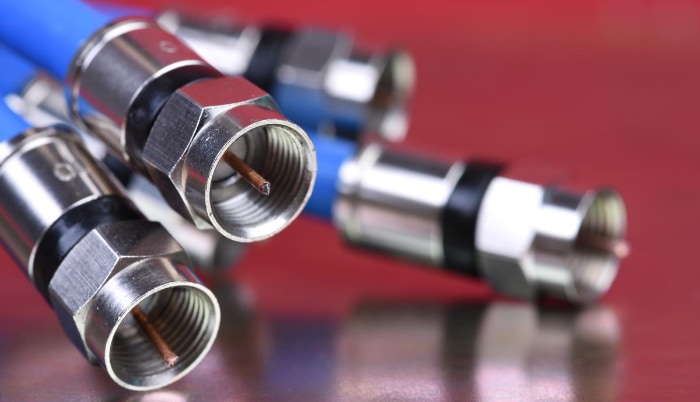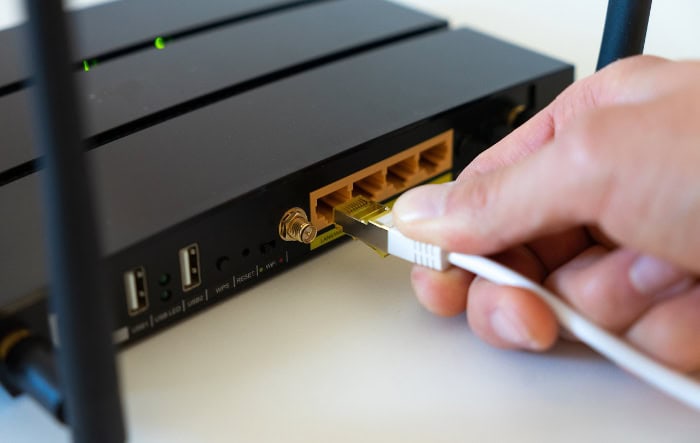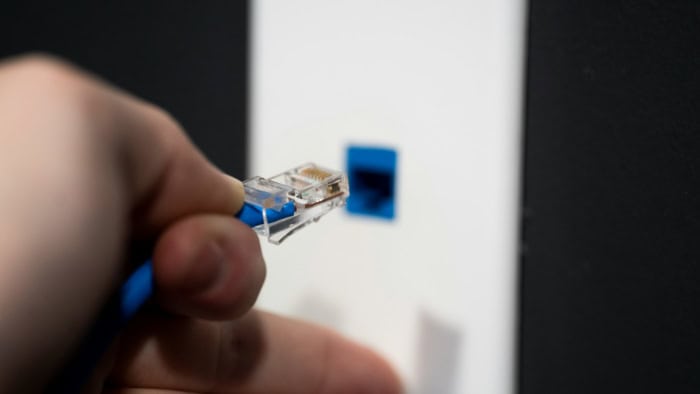Coax vs. Ethernet: Choosing the Right Connection

When it comes to building a network that meets the demands of modern life, the type of cable you choose can significantly impact performance, reliability, and ease of use. Coaxial cables, traditionally used for cable TV and older internet systems, remain prevalent in many homes, while Ethernet cables have quickly become the gold standard for high-speed data transmission in both residential and professional settings.
The debate between coax and Ethernet goes beyond technical specifications, it’s about finding the right balance between speed, distance, cost, and practicality.
Performance Comparison
The performance of coaxial and Ethernet cables is influenced by factors such as speed, bandwidth, latency, reliability, and distance limitations. Each cable type has its strengths and limitations, making it clearer where they excel in specific applications.
Speed and Bandwidth
Speed and bandwidth capacity are crucial metrics when assessing network performance. Coaxial cables, traditionally used for cable-based internet services, can deliver speeds of up to 1 Gbps under most standard configurations.
However, advancements such as MoCA 2.5 have extended the capabilities of coaxial lines to support data transfer speeds of up to 2.5 Gbps, making them a viable option for high-speed home networking. Despite these improvements, coaxial cables generally lag behind Ethernet in terms of raw speed and efficiency.
Ethernet cables, particularly those following newer standards, are built to handle exceptional speeds. Cat6 cables support up to 1 Gbps, while Cat6a and Cat7 can achieve speeds of up to 10 Gbps, with Cat8 pushing even higher.
This makes Ethernet ideal for data-intensive applications, such as video editing, cloud-based workflows, and ultra-fast internet connections. Furthermore, Ethernet performance scales well with advancements in hardware, ensuring that it continues to meet evolving networking demands.
Latency and Reliability
Low latency is essential for applications that require real-time responses, such as gaming, video conferencing, and live streaming. Ethernet cables are known for their minimal latency, which makes them the preferred choice for scenarios where responsiveness is critical.
This is largely due to their ability to process digital signals without converting them, allowing for faster and more reliable data transmission.
Coaxial cables, while reliable for general use, may struggle with latency in specific cases. Analog signal types and the need for signal modulation can introduce small delays.
Additionally, coaxial is more prone to signal degradation over long distances, leading to reduced performance. While technologies like MoCA have mitigated some of these issues, coaxial still falls short of Ethernet’s consistency and low-latency capabilities.
Distance Limitations
The effective distance over which a cable can transmit a signal without losing quality is another important consideration. Coaxial cables excel in long-distance transmission, with the ability to carry signals over distances of up to 500 meters before significant degradation occurs.
This makes coaxial an excellent choice for delivering internet and television services from internet service providers (ISPs) to homes or buildings.
Ethernet cables, in contrast, are limited to a maximum distance of approximately 100 meters for most standard installations. Beyond this range, performance begins to deteriorate. However, Ethernet networks can easily be expanded and enhanced by using switches, repeaters, or transitioning to fiber-optic solutions.
As such, Ethernet is still highly effective for local area networks (LANs) where devices are typically positioned within close proximity.
Both coaxial and Ethernet have their strengths when it comes to performance. Coaxial’s ability to handle long distances provides an edge for ISP-to-home connections, whereas Ethernet’s superior speed, low latency, and scalability make it more efficient for modern, high-performance networks.
Practical Use Cases

Both coaxial and Ethernet cables serve unique purposes in networking, with their applications shaped by their performance and capabilities. While coaxial cables retain a notable presence in certain legacy systems, Ethernet cables dominate in modern networking solutions.
Home Networking
In home networking, Ethernet has become the preferred option for high-speed, reliable connections. It supports modern local area networks (LANs), enabling fast data exchange between devices such as routers, computers, gaming consoles, and smart TVs.
Ethernet is particularly advantageous for creating high-performance setups that require minimal latency, making it ideal for online gaming, video streaming, and virtual reality applications. Additionally, Ethernet’s ability to power devices through Power over Ethernet (PoE) technology allows users to connect and power smart home hubs, IP cameras, and other devices without the need for separate power sources, simplifying installation and reducing cable clutter.
Coaxial cables, while not as prevalent in modern networking, are still widely used for broadband delivery by internet service providers (ISPs) and for distributing cable television signals. Many homes rely on coaxial wiring for their existing infrastructure.
With the rise of technologies like MoCA (Multimedia over Coaxial Alliance), coaxial cables can be adapted to handle faster data speeds, bridging the gap for homes that lack Ethernet wiring. MoCA adapters allow users to convert coaxial connections into Ethernet-like performance, enabling high-speed internet in areas where Ethernet cables are not readily available.
Office/Enterprise Environments
Office and enterprise settings demand scalability and structured cabling solutions, areas where Ethernet shines. Ethernet cabling forms the backbone of professional networks, connecting devices across workstations, servers, switches, and access points.
Its ability to reliably handle high-speed data transfers and manage significant network traffic makes it essential for business operations. Ethernet also supports advanced networking features like VLANs (Virtual Local Area Networks) and QoS (Quality of Service), which help improve network efficiency and prioritize critical tasks.
Coaxial cables play a minor role in office environments, often limited to specific use cases such as CCTV systems or hybrid setups where existing coaxial infrastructure is reused. In such cases, coaxial serves as a practical solution for transmitting video signals or integrating older systems into modern networks.
However, its limitations in speed, scalability, and flexibility make it less suitable for large-scale enterprise networking compared to Ethernet.
Hybrid Solutions
Hybrid solutions that combine both coaxial and Ethernet technologies offer a practical way to leverage existing infrastructure while upgrading network performance. One of the most popular techniques involves using MoCA adapters, which allow coaxial cables to function as part of a high-speed Ethernet network.
This approach is particularly effective in homes or offices where running new Ethernet wiring would be difficult or expensive. For example, coaxial wiring installed for cable TV or broadband services can be repurposed to connect devices in different rooms, improving network coverage and speed without extensive modifications.
Hybrid setups also demonstrate flexibility by allowing users to transition from older coaxial-based systems to modern Ethernet solutions over time. By combining these technologies, networks can adapt to evolving requirements while minimizing costs and disruptions related to infrastructure changes.
Both cables can find their place in home and professional environments, but their utility depends on the specific needs of the network. Ethernet remains the clear choice for modern, scalable solutions, while coaxial’s role often revolves around legacy systems or as a transitional tool through hybrid configurations.
Key Decision Factors

Choosing between coaxial and Ethernet cables often comes down to several practical considerations. Factors such as cost, ease of installation, and the ability to handle environmental interference play a significant role in determining the most suitable choice for a network setup.
Cost Analysis
Cost is often one of the first aspects to consider when planning a network. Coaxial cables generally come with a lower upfront cost and are widely deployed in residential areas due to their historical use for TV and broadband services.
Since most homes are already equipped with coaxial infrastructure, the need for additional investment is minimal in many cases. Coaxial’s affordability makes it an attractive option for basic networking needs or as part of hybrid solutions.
Ethernet cables, while typically more expensive upfront compared to coaxial, offer long-term benefits through superior performance and scalability. Higher-end Ethernet categories, such as Cat6a and Cat7, involve greater material costs due to advanced shielding and higher data transmission capabilities.
Additionally, setting up an Ethernet-based network may require purchasing additional equipment like switches, patch panels, or PoE-capable devices. However, the higher initial expense is offset by Ethernet’s adaptability to various modern applications and its ability to support higher speeds and more reliable connections over time.
Installation Complexity
The complexity of installation varies greatly between coaxial and Ethernet systems. Coaxial cables are generally easier to set up, especially in homes with pre-existing coaxial wiring.
Connecting devices such as modems, cable boxes, or MoCA adapters typically involves a simple plug-and-play process. For use with common services like cable TV and ISP-provided internet, coaxial installations rarely require significant technical expertise or additional infrastructure upgrades.
Ethernet networks often demand more effort during installation, particularly for scenarios where new wiring needs to be run through walls or ceilings. Proper cable management, termination, and testing are critical to achieving optimal performance, which may require professional assistance.
Factors such as the choice of cable category, the need for compatible routers and switches, and the placement of access points also contribute to the complexity of Ethernet installations. However, in environments like offices or enterprise setups, the time and effort invested in installing Ethernet cabling result in a network that is faster and more reliable.
Interference and Environmental Factors
In terms of resistance to interference, coaxial and Ethernet cables differ significantly. Coaxial cables are built with shielding layers that protect signals from external electromagnetic interference (EMI) and radio frequency interference (RFI).
This shielding ensures that coaxial performs consistently in environments with significant electronic noise, making it an excellent option for long-distance data delivery in such conditions.
Ethernet cables, especially unshielded twisted pair (UTP) variants, are more susceptible to interference from nearby electrical equipment or other cables. The twisting of wire pairs reduces crosstalk to some extent, but in high-interference environments, shielded Ethernet cables (such as FTP or STP designs) are necessary to maintain stable performance.
Even shielded Ethernet cables may require careful installation practices, such as proper grounding, to fully mitigate the risk of interference. For most home networks, interference is typically not a major concern, but in industrial or high-density office settings, coaxial’s durability or shielded Ethernet cables may be more suitable.
Coaxial and Ethernet cables each have advantages and limitations when viewed through the lenses of cost, ease of setup, and handling interference. The decision often depends on balancing immediate needs with long-term requirements, as well as assessing the complexity of the environment in which the cables will be deployed.
Conclusion
Selecting the right cabling technology for a network boils down to evaluating the specific requirements of the setup. Coaxial cables excel in scenarios where existing infrastructure can be leveraged, such as homes with pre-installed coaxial lines for TV or broadband services.
They are cost-effective, durable, and ideal for long-distance transmission, making them suitable for applications like ISP-to-home connections, cable TV, and hybrid setups using MoCA adapters. However, coaxial is more limited in speed and scalability, making it less desirable for modern, high-performance networks.
Ethernet cables, on the other hand, are the gold standard for environments demanding high speed, low latency, and reliability. They form the backbone of most modern networks, from home LANs to large-scale enterprise systems.
Although the upfront cost and installation effort can be higher, Ethernet provides unmatched performance, adaptability, and scalability, ensuring robust networks that can handle bandwidth-intensive applications such as gaming, video conferencing, and cloud-based workflows.
Balancing infrastructure, budget, and performance is critical when choosing between the two. For homes or offices with existing coaxial wiring, leveraging that infrastructure with MoCA adapters may bridge the gap until Ethernet can be implemented.
However, for future-proof, high-speed networks that can grow with evolving technology, investing in Ethernet is often the smarter long-term choice. Both technologies have their strengths, and understanding how they align with specific needs ensures the best possible networking solution.


